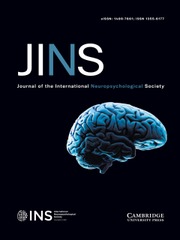No CrossRef data available.
Article contents
27 Risky Decision-Making Moderates the Association Between Motives for Cannabis Use and Cannabis Use Trajectories Among Adolescents
Published online by Cambridge University Press: 21 December 2023
Abstract
Prior literature has documented how motives for cannabis use predict frequency of use and cannabis use problems among adolescents. However, few studies have examined possible moderating variables that may influence the association between cannabis use motives and frequency of use. The current study examines how risky decision-making moderates this association to help better understand which individuals are at greater risk for cannabis use escalation. The current study will be the first to examine the interactive effects of motives for cannabis use (i.e., health or recreational reasons) and risky decision-making on cannabis use trajectories among a sample of adolescent cannabis users.
Data from 194 adolescent cannabis users aged 14–17 at baseline were analyzed as part of a larger longitudinal study. Participants included those who self-reported use of cannabis within six months prior to the baseline assessment. The Marijuana Reasons for Use Questionnaire (MJRUQ) was used to assess motives for cannabis use from a list of 13 items. A confirmatory factor analysis identified “health” and “recreational” factors for motives for cannabis use. Lifetime frequency of cannabis use (number of days used) was assessed through the Drug Use History Questionnaire, while risky decision-making was assessed using the Game of Dice Task. We used latent growth curve modeling and linear regression analyses to examine the interactive effects of motives for cannabis use and risky decision-making on initial levels of lifetime cannabis use at baseline, and rate of cannabis use escalation over time.
No significant interactive effects were found for health motives for cannabis use; however, we found significant main effects of health motives on initial levels of lifetime cannabis use at baseline (b = 100.82, p < .01) and rate of cannabis use escalation (b = 24.79, p < .01). Those with a greater proclivity to use cannabis for health purposes showed higher initial levels of lifetime use at baseline and steeper increases in the rate of cannabis use escalation relative to those less likely to use for health purposes. Furthermore, we found a significant interactive effect of recreational motives for use and risky decision-making on the rate of cannabis use escalation (b = -2.53, p < .01). Follow-up analyses revealed that among those less likely to use cannabis for recreational purposes, higher risky decision-making was associated with a steeper increase in the rate of cannabis use escalation relative to those who exhibited lower risky decision-making.
The current study replicated findings suggesting that cannabis use motives influence cannabis use trajectories. We found that using cannabis primarily for health reasons was associated with higher initial levels and steeper increases in use regardless of decision-making. Furthermore, we found that both motives for use and risky decision-making interacted to influence associations with cannabis use trajectories. Specifically, among individuals reporting less cannabis use for recreational reasons, those with relatively riskier decision-making showed steeper increases in the rate of cannabis use escalation. These findings inform prevention and intervention practices that focus on decision-making by tailoring approaches based on an individual’s primary motives for cannabis use.
Keywords
- Type
- Poster Session 09: Psychiatric Disorders | Mood & Anxiety Disorders | Addiction | Social Cognition | Cognitive Neuroscience | Emotional and Social Processing
- Information
- Copyright
- Copyright © INS. Published by Cambridge University Press, 2023




